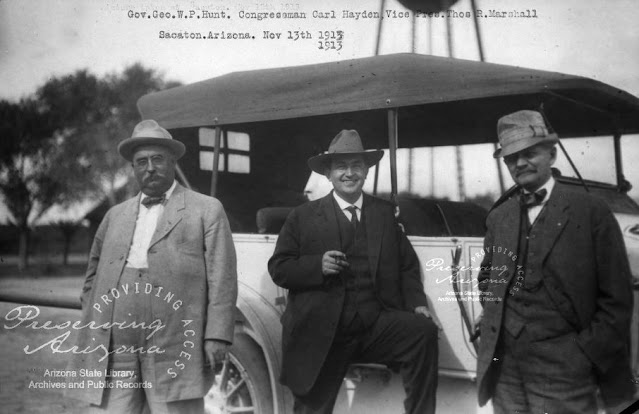Pushing Congress to create what was called "The San Carlos Project" took decades and a lot of work by a lot of people. We'll add here what we can find about it.
Sensing that the most important obstacles to the San Carlos bill had been removed, in the fall of 1923 Hayden called together Ashurst, Cameron, and San Carlos Association representatives for a series of strategy meetings, most of which took place in Hayden's office. As a result, on December 11, Cameron-Arizona's lone Republican in Washington-introduced in the Republican-controlled Senate a bill (S. 966) "to continue construction of the San Carlos Federal Irrigation Project." While Ashurst lobbied for the support of "every Democrat in the Senate," Republicans-pleased to have one of their number in the upper house from traditionally Democratic Arizona fell in line behind Cameron. On April 23, 1924, the Senate, in a rare display of unanimity on a floor vote, passed the San Carlos Project bill.
Rosy predictions notwithstanding, President Coolidge had yet to sign the bill. The conference committee had completed its report and Congress had approved $5,500,000 for construction of the dam and accoutrements, but Coolidge complained that the project would place too heavy a burden on taxpayers. Hayden quickly arranged a meeting with Interior Secretary Work and Commissioner of Indian Affairs Burke, seeking their advice on how best to avoid a presidential veto. They suggested naming the structure "Coolidge Dam.” Hayden liked the idea. Along with Ashurst, he met Coolidge at the White House and informed the president that the "marvelous structure” on the Gila River would bear his name. Evidently, the flattery worked, and on June 7, 1924, Coolidge signed the San Carlos Project.
https://azmemory.azlibrary.gov/digital/collection/histphotos/id/18239/
Go to The Previous Section
Return to top of this page.








No comments:
Post a Comment